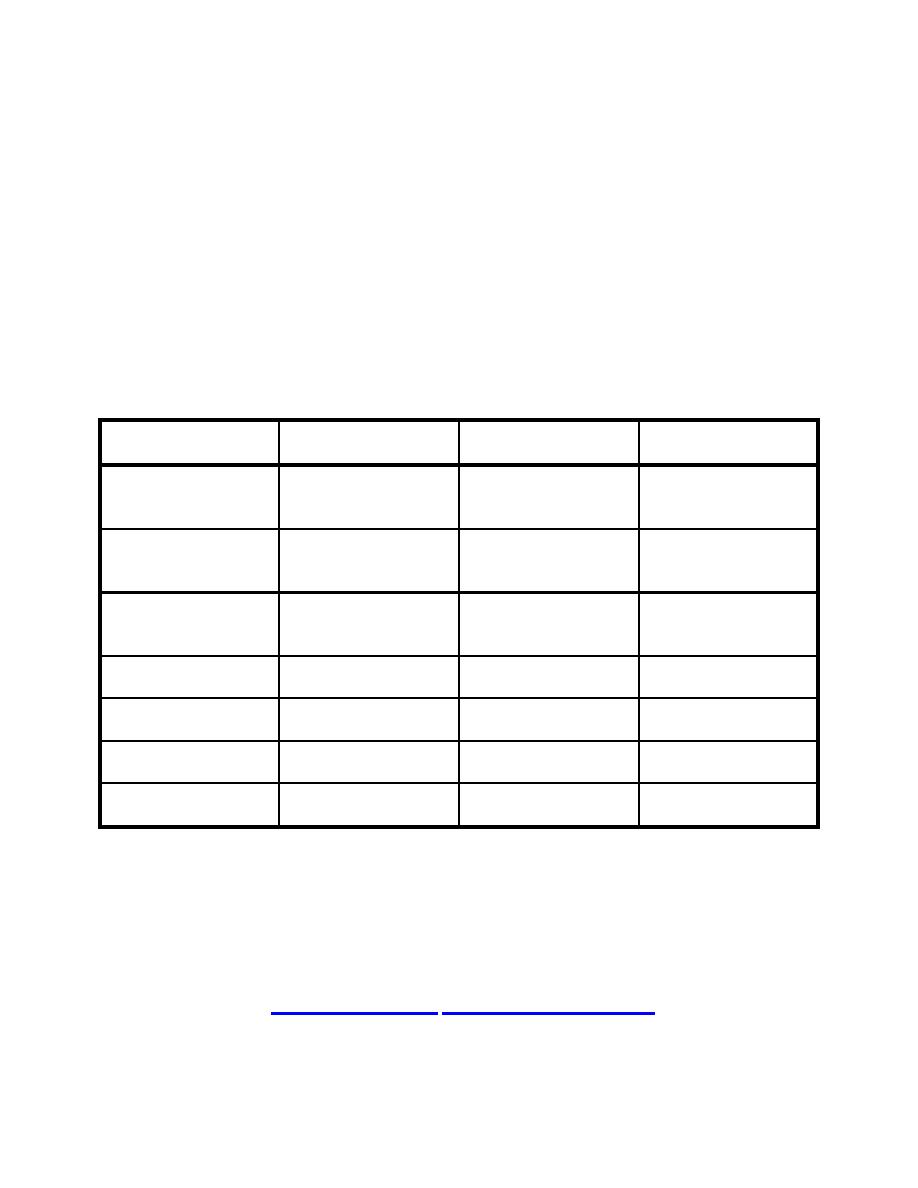
UFC 4-159-03
3 October 2005
PIER FITTINGS. Standard pier and wharf mooring fittings, as shown in
6-9
Figure 6-5, include:
Bollards
Bitts
Cleats
Cleats are not recommended for ships, unless absolutely necessary,
because they are low capacity.
Some of the fittings commonly used on U.S. Navy piers are summarized in
Table 6-11. Guidance for placing pier fittings in pier/wharf design is given in MIL-HDBK-
1025/1.
Table 6-11. Commonly Used U.S. Navy Pier Mooring Fittings
DESCRIPTION
SIZE
BOLTS
WORKING
CAPACITY (kips)
SPECIAL
Height=48 in.
12 x 2.75-in. dia.
Horz. = 660
MOORING
Base 48x48 in.
@45 deg = 430
BOLLARD "A"
Nominal = 450
SPECIAL
Height=44.5 in.
8 x 2.25-in. dia.
Horz. = 270
MOORING
Base 39x39 in.
@45 deg = 216
BOLLARD "B"
Nominal = 200
LARGE BOLLARD
Height=44.5
4 x 1.75-in. dia.
Horz. = 104
WITH HORN
Base 39x39 in.
@45 deg = 66
Nominal = 70
LARGE DOUBLE
Height=26 in.
10 x 1.75-in. dia.
BITT WITH LIP
Base 73.5x28 in.
Nominal = 75*
LOW DOUBLE
Height=18 in.
10 x 1.625-in. dia.
BITT WITH LIP
Base 57.5x21.5 in.
Nominal = 60*
42-INCH CLEAT
Height=13 in.
6 x 1.125-in. dia.
Base 26x14.25 in.
Nominal = 40
30-INCH CLEAT
Height=13 in.
4 x 1.125-in. dia.
Nominal = 20
Base 16x16 in.
*Working capacity per barrel; after NAVFAC Drawing No. 1404464
It is recommended that all mooring fittings be clearly marked with their
safe working capacities on a plate bolted or welded to the base of the mooring device.
Additional information concerning the sizes and working capacities of pier and wharf
mooring fittings is found in NFESC TR-6014-OCN, Mooring Design Physical and
Empirical Data and in MIL-HDBK-1025/1. Also, NFESC assesses the condition of all
mooring fittings during its routine pier/wharf inspections U.S. Navy waterfront facilities.
Contact NFESC 55 ( alex.viana@navy.mil ) for inspection
results and reports for specific U.S. Navy waterfront facilities.
134


 Previous Page
Previous Page
